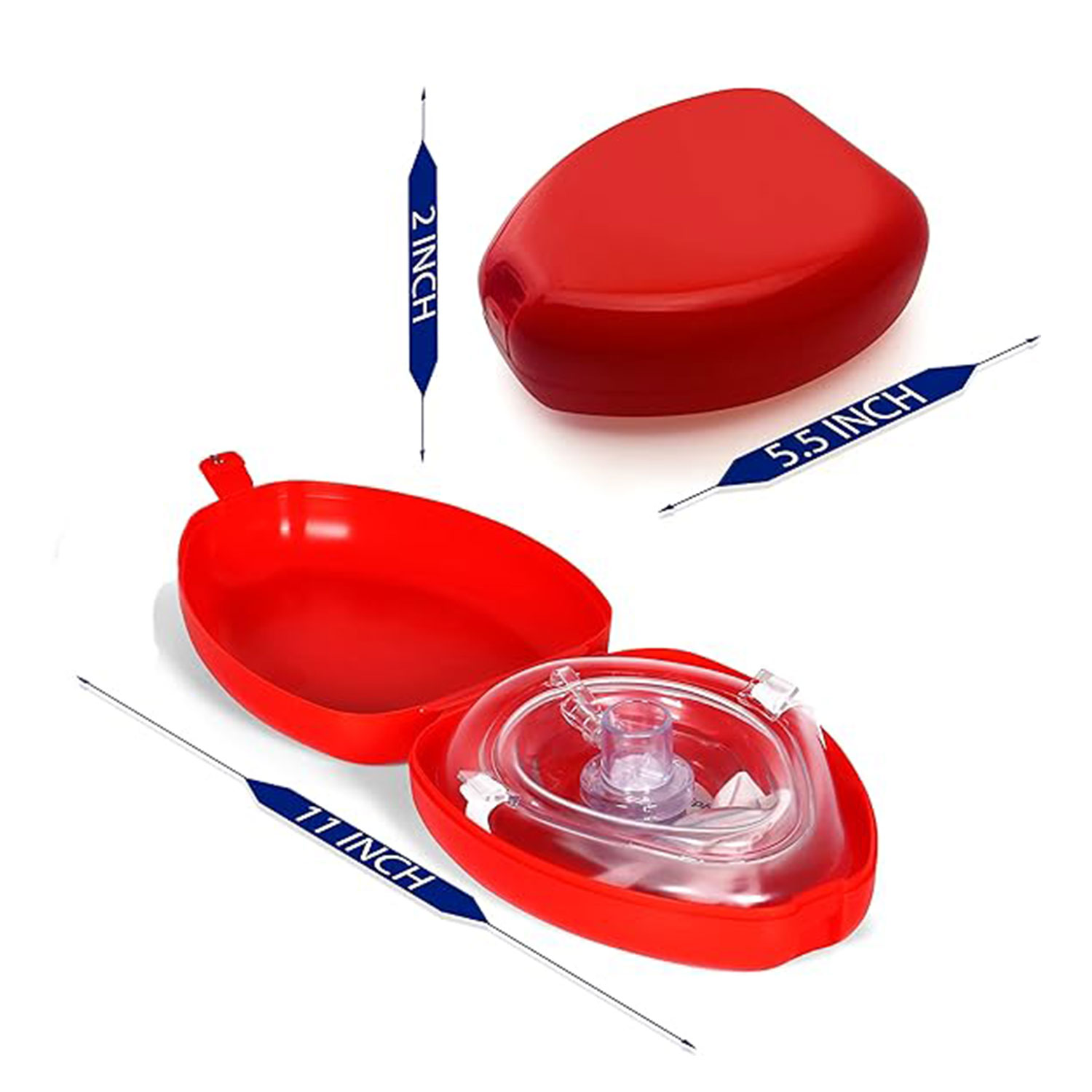Features of CPR Masks
2024-07-15
A CPR mask, also known as a pocket mask or rescue mask, is a device used to provide safe and effective artificial respiration (ventilation) during cardiopulmonary resuscitation (CPR). Here’s an overview of CPR masks, their features, usage, and importance in emergency situations:
Features of CPR Masks
1. One-Way Valve:
- Critical Feature: Equipped with a one-way valve that allows rescuers to administer breaths to a victim while preventing backflow of air and bodily fluids.
- Hygienic Barrier: Acts as a barrier to reduce the risk of cross-contamination between the rescuer and the victim.
2. Transparent Mask:
- Visibility: Made of transparent materials (e.g., plastic), allowing rescuers to monitor the victim’s lips, color, and any vomitus during CPR.
- Fit: Designed to fit securely over the victim’s nose and mouth to facilitate effective ventilation.
3. Oxygen Inlet:
- Optional Feature: Some CPR masks may include an oxygen inlet port that allows supplemental oxygen to be delivered if available, enhancing oxygenation during CPR.
4. Elastic Strap:
- Secure Fit: Equipped with an elastic strap or head harness to hold the mask in place during rescue efforts, ensuring a tight seal.
5. Compact and Portable:
- Size: Designed to be compact and lightweight, often packaged in a small carrying case or pouch for easy storage and accessibility in emergency kits or first aid bags.
6. User-Friendly Design:
- Accessibility: Intuitive design for quick deployment by trained rescuers and laypersons during emergency situations.
- Instructions: May include visual instructions or diagrams on the packaging to guide proper use.
Usage of CPR Masks
1. Cardiac Arrest Response:
- Immediate Action: Used to provide rescue breathing to victims who are unresponsive and not breathing normally.
- Technique: Rescuers place the mask over the victim’s face, ensuring a good seal, and deliver rescue breaths according to CPR guidelines (e.g., 30 compressions to 2 breaths ratio).
2. First Aid and Emergency Response:
- Diverse Settings: Essential in various emergency scenarios, including cardiac arrest, drowning incidents, respiratory emergencies, and opioid overdoses.
- Protection: Provides a protective barrier for rescuers against exposure to bodily fluids, pathogens, and potential contaminants.
3. Healthcare and Public Safety Settings:
- Training: Used during CPR training sessions to demonstrate correct ventilation techniques and familiarize participants with using protective equipment.
- Professional Use: Standard equipment in healthcare facilities, ambulance services, and public safety agencies for responding to medical emergencies.
Importance of CPR Masks
1. Safety and Hygiene:
- Barrier Protection: Reduces the risk of infection transmission and cross-contamination between rescuers and victims, ensuring safety for both parties.
- Standard Protocol: Aligns with CPR guidelines and best practices recommended by organizations such as the American Heart Association (AHA) and the Red Cross.
2. Effectiveness in CPR:
- Rescue Breaths: Facilitates effective delivery of rescue breaths, maintaining adequate oxygenation and circulation until advanced medical help arrives.
- Ventilation Control: Helps rescuers control the volume and rate of airflow during artificial respiration to optimize outcomes for the victim.
3. Accessibility and Preparedness:
- Readiness: Ensures readiness for bystanders and healthcare professionals to promptly initiate CPR and provide life-saving interventions when needed.
- Public Health Impact: Contributes to community resilience by empowering individuals with the tools and skills to respond effectively to sudden cardiac arrests and other emergencies.
Choosing a CPR Mask
1. Quality and Certification:
- Certified Products: Select CPR masks that comply with recognized standards (e.g., ASTM F2100 for barrier performance) and regulations in your region.
2. Ease of Use:
- User-Friendly Design: Consider masks with clear instructions and ergonomic features for intuitive use under stress.
3. Compatibility:
- Fit and Seal: Ensure the mask provides a secure fit over the victim’s face to maintain an effective seal during ventilation.
4. Durability and Maintenance:
- Material Quality: Opt for masks made from durable, hypoallergenic materials that are easy to clean and disinfect after use.
5. Accessibility:
- Availability: Make sure the mask is readily accessible in emergency kits, first aid stations, and healthcare settings where CPR may be performed.
Conclusion
A CPR mask is an essential tool for providing effective ventilation and protecting both rescuers and victims during emergency situations such as cardiac arrest. By ensuring proper selection, training, and accessibility of CPR masks, individuals and healthcare providers can play a crucial role in saving lives and improving outcomes in critical medical emergencies.



